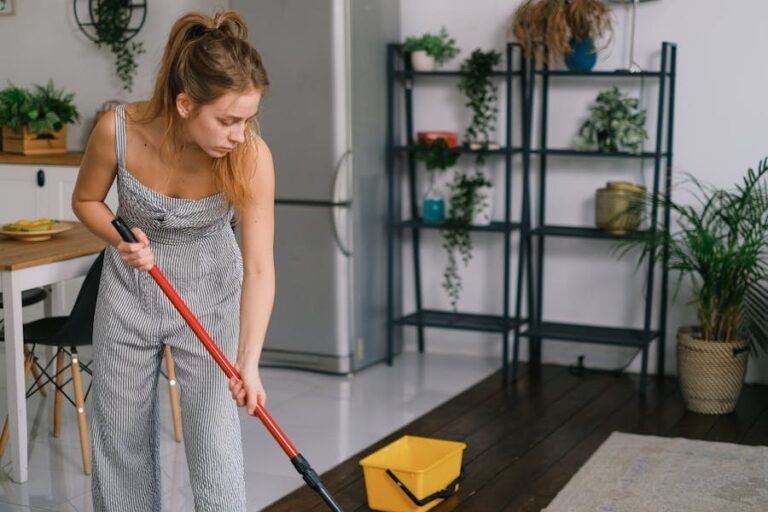If your home doesn’t feel as welcoming or practical as it once did, you’re not alone. Rooms naturally start to feel cluttered or underused as families grow and daily routines shift. But you don’t need a full renovation to feel a real difference. Small changes in how you see and use your space can reinvigorate your home’s energy.
Smart storage and simple outdoor upgrades can uplift your experience. And refreshing your backyard or clearing out long-neglected closets can each spark meaningful change in how your home feels.
What follows are approachable, stylish ideas designed to help you enjoy your home more — day in and day out.
Transform Your Backyard Into a Multi-Use Space
A forgotten backyard can quietly go to waste, but it doesn’t take much to make it useful again. With just a few updates, even a small outdoor space can become an everyday retreat — perfect for unwinding solo or hosting friends and family.
Consider how your family naturally gathers outside. A cozy seating nook can turn into a favorite spot for morning coffee, while a raised garden bed may double as a weekend project that keeps kids engaged. Simple additions like string lights, a patio umbrella, or an all-weather rug can bring the space together.
Brainstorm a few backyard upgrade ideas to blend function and style. Built-in benches with storage, weatherproof patio tables and chairs, or a mini grill station can make your outdoor area feel like an authentic expansion of your home. You can go even further with a DIY garden or fountain accented with lively decorations to make your backyard as welcoming and cozy as the inside of your house.
Decluttering and Organizing Your Home for Better Flow
When clutter takes over, it’s tough to feel relaxed at home. Overflowing surfaces and jam-packed closets can quietly drain your energy and focus. Clearing things out opens up your rooms and helps your home feel calmer and more collected.
Try a keep-it-simple method like the one-in, one-out approach. Every time something new enters your space, something else goes. It’s a quick way to keep things in balance, especially with kids’ toys, seasonal clothes, or kitchen gadgets. Donate or pass along what no longer fits your needs.
Some things don’t need to live in your house full-time. Self-storage can be a game-changer for items you use occasionally, like holiday decorations, baby gear, or extra furniture. Keeping those things accessible but out of sight frees up space without letting go of what still matters.
Maximizing Space With Strategic Organization and Layout
You don’t always need more square footage. Often, the real difference comes from rethinking how you use the space you’ve got. A few thoughtful adjustments to your layout can help each room feel more open and easy to move through.
Take a fresh look at how furniture is arranged. Create open walkways and separate zones in shared areas: a play spot for little ones, a quiet nook for reading, and a cozy area for conversations. Clear roles for each section keep things feeling calm and functional.
Visual tricks go a long way. Use mirrors to bounce light, choose leggy furniture that shows more floor, and stick to lighter colors or soft patterns to keep rooms feeling airy. These details can make even the most snug rooms feel more open and thoughtfully put together.
Maintaining Cleanliness for a More Pleasant Environment
A clean space feels better — plain and simple. And once clutter is under control and rooms are more functional, it’s easier to stay on top of daily upkeep.
Keep things manageable with bite-sized routines. A few minutes of tidying before bed, or setting aside one weekend morning for deeper cleaning, helps maintain momentum. Sharing the load with your partner or kids builds good habits and makes upkeep less overwhelming.
Routine cleanliness checks matter, too. Swap air filters, clear out expired food, wipe down baseboards, and freshen up your cabinets and bathrooms when needed. Those small steps add up.
One way to stay consistent is to use quick visual cues as part of your cleaning habits. Take note of what you see when you walk through your home — cluttered floors, items out of place, or a messy kitchen sink may signal it’s time for a refresh. These small observations help you catch areas that need attention before they build up. The goal is consistency: a home that feels looked after and welcoming all the time.
Conclusion
A home that supports your family’s needs can grow out of small, meaningful changes. Rearranging furniture, refreshing the backyard, or carving out better storage can each bring new life to the space you already have.
Pick one area to begin with. Give yourself room to experiment. Over time, small improvements build on each other, turning your home into a place that truly fits the life you’re living.



